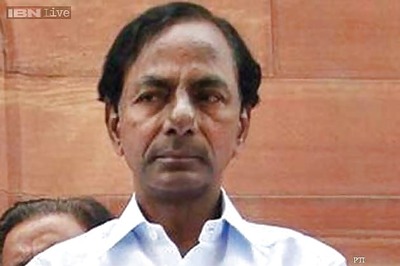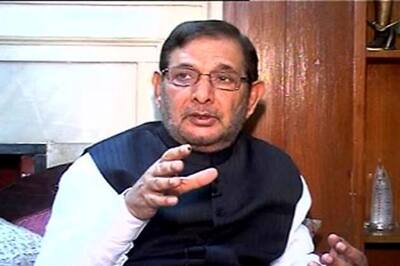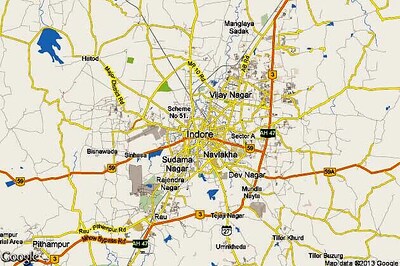
views
An emergency fund is crucial for individuals because it provides financial security and peace of mind in the face of unexpected events. It serves as a buffer against job loss, medical emergencies, or major repairs, allowing individuals to meet their immediate needs without resorting to debt. By having a safety net, individuals can avoid financial stress and make decisions independently, without relying on external sources of assistance.
Also, an emergency fund also offers flexibility, protects against income loss, and enables individuals to seize opportunities when they arise. It’s an essential tool for long-term financial stability and resilience.
Imagine this: you’re driving to work one day when you get into a car accident. Your car is totaled, and you’re injured.
This is just one example of a car accident that can happen to anyone.
Other examples can be :
Medical emergencies that hinder work, cause missed days, reduced productivity, and income loss due to hospitalisation, surgeries, or long recovery periods. The associated medical expenses can create a significant financial burden.
Avinash Ramachandran, chief operations officer, Assurekit (an insurance platform) shares if you don’t have an emergency fund, you may be forced to put these expenses on credit cards or borrow money from friends or family. This can lead to debt, which can be difficult to pay off.
That’s the reason the scope of this article centres on the age demographic of 20-30 years, with a specific emphasis on the younger generation.
Tips by Avinash Ramachandran
Why an Emergency Fund is Needed:
Life is full of surprises, and not all of them are pleasant. An emergency fund acts as your financial safety net, helping you stay stable during unexpected events like job loss, medical emergencies, or sudden car repairs. It’s like having a buffer that keeps you from relying on credit cards, loans, or borrowing from friends and family in times of crisis.
Who Needs the Emergency Fund Most (By Age):
Everyone needs an emergency fund, but some people may need it more than others. People who are younger and have less financial security may be more vulnerable to financial hardship in the event of an emergency. People who have dependents may also need a larger emergency fund to cover the costs of childcare or other expenses if they are unable to work.
Determining the Ideal Corpus Size for an Emergency Fund:
We’ve got a simple rule of thumb for you to follow based on different scenarios, suggests Ramachandran.
Scenario 1:
If you’re single and don’t have any dependents like a spouse, kids, or financially needy parents, then here’s the deal: multiply your average monthly expenses by 6 i.e. six times This should give you a good enough emergency fund to rely on.
Scenario 2:
Now, if you do have some dependents in the picture, we’ll adjust things a bit. For up to two dependents, take your monthly expenses and multiply them by 12. Got three to four dependents? Multiply by 18.
Calculating the exact amount based on your needs
Ramachandran says if you don’t have any dependents who rely on your hard-earned cash, then saving up three months’ worth of expenses should do the trick. Have up to two dependents? Aim for six months’ worth. If you’ve got three or four dependents, go for the gold and aim for a whopping nine months’ worth of expenses as your emergency fund.
Taking Emergency Funds Seriously: A Youth Perspective:
It’s important for everyone, including young folks, to have some emergency cash saved up. Yep, even putting aside a small amount can make a big difference when life throws unexpected expenses your way—whether it’s tomorrow, next month, or even a few years down the line.
Now, picture this: without an emergency fund, what options do you have? You might have to dip into your regular savings or resort to credit cards or costly payday loans, those are not fun paths to take. Paying off debts can be a real pain,
But here’s the deal: even if your emergency fund is small, having something set aside can soften the blow of unexpected costs. It means you won’t have to borrow as much money, and you’ll have less to pay back in the long run. So, let’s get serious about building that emergency fund and give ourselves some peace of mind!
Here are a few tips for youth as suggested by Ramachandran
- Understand the importance of financial security and the risks of lacking an emergency fund.
- Determine savings targets and establish achievable milestones.
- Practice budgeting, cut unnecessary expenses, and save diligently.
- Stay Disciplined: Maintain consistent savings habits and resist using the emergency fund for non-emergencies.
- Get Insurance: it helps you with financial losses from job loss, health issues, or loss of life, providing assistance in emergencies.
- Consider a separate plan: Even if your employer provides health insurance, supplement your benefits with additional coverage.
- Learn from financial experts, resources, and mentors for valuable insights.
- By adopting these practices, you can proactively build your emergency fund and establish a solid financial foundation for the future.
Ramachandran underlines 11 steps to build an emergency fund;
- Set a goal: Aim for six months of living expenses in your emergency fund.
- Create a budget: Track your spending and ensure you’re on target to reach your savings goal.
- Automate your savings: Schedule recurring transfers from checking to savings each month.Where to invest the Emergency fund :
- Money market funds
- National Savings Certificate
- Flexi fixed deposits
- Post Office Time Deposit
- Cut back on unnecessary expenses: Reduce dining out, cancel unused subscriptions, and find cheaper alternatives.
- Make extra money: Consider part-time work, side hustles, or selling unwanted items.
- Hands off the fund: Resist using the emergency fund for non-emergencies.
- Regularly review your fund: Adjust goals as income and expenses change.
- Be patient: Building an emergency fund takes time and effort.
- Avoid panic: Trust your emergency fund for unexpected expenses.
- Celebrate success: Acknowledge your achievement in reaching your goal.




















Comments
0 comment